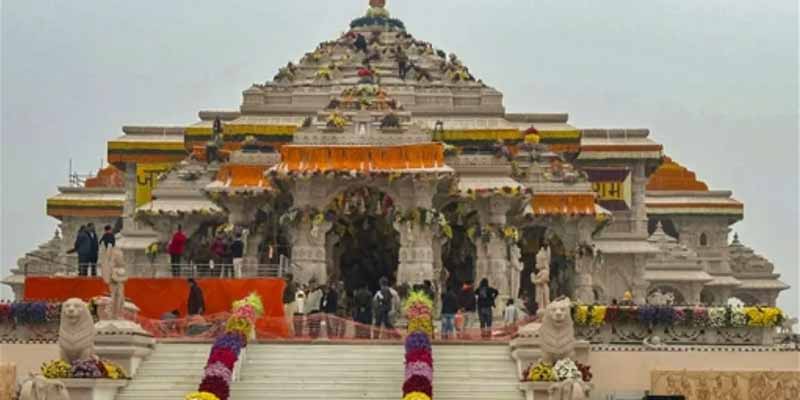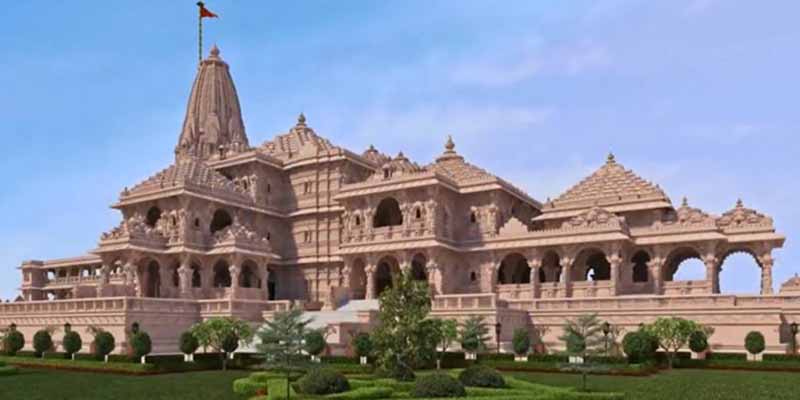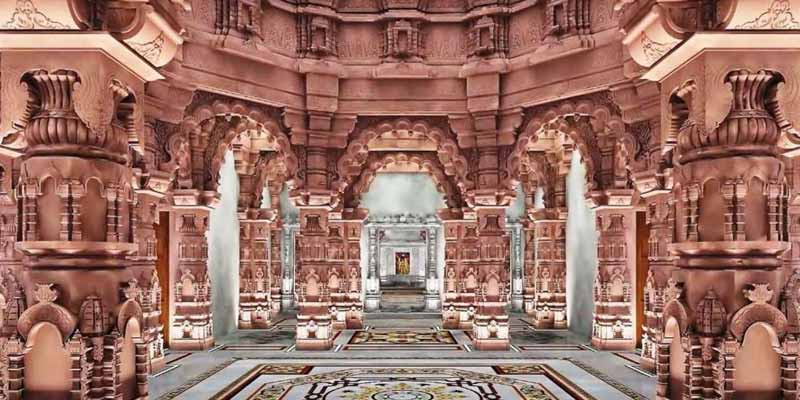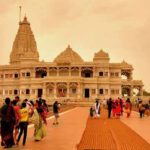Ayodhya Ram Mandir, also known as the Ram Janmabhoomi Mandir, is a Hindu temple dedicated to Lord Rama in Ayodhya, Uttar Pradesh, India. The construction of the temple is a significant milestone in India’s cultural and religious history. The temple is built at the site believed to be the birthplace of Lord Rama, a revered figure in Hinduism.
The Ayodhya dispute, centered around this site, had been a contentious issue for decades. The Supreme Court of India, in a landmark judgment in November 2019, ruled in favor of the construction of the Ram Mandir, while also directing the allocation of an alternate piece of land for the construction of a mosque in Ayodhya.
The temple’s design incorporates traditional architectural elements, reflecting the grandeur of Indian temple art and culture. The construction of the Ayodhya Ram Mandir is viewed as a symbol of national harmony and marks the end of a long-standing legal and socio-religious dispute. It holds immense cultural and emotional significance for millions of Hindus, and its completion is a testament to India’s commitment to religious pluralism and constitutional values, Religious Places in Rajasthan.

History of Ayodhya Ram Mandir
The history of the Ayodhya Ram Mandir is deeply intertwined with the socio-political fabric of India and has been a subject of contention for several decades. The site is believed to be the birthplace of Lord Rama, a revered figure in Hinduism, and has been a pilgrimage destination for centuries.
The Babri Masjid, a mosque built in the 16th century by the Mughal emperor Babur, stood at the disputed site in Ayodhya. However, in 1992, a large group of Hindu activists demolished the mosque, claiming that it was built on the ruins of a Hindu temple marking the birthplace of Lord Rama. The demolition led to widespread communal riots across India, causing significant tensions between the Hindu and Muslim communities.
Legal battles ensued over the ownership of the land, with both Hindu and Muslim groups staking their claims. The case reached its apex in November 2019 when the Supreme Court of India delivered a historic verdict. The court ruled in favor of the construction of a Hindu temple on the disputed site while also allocating an alternative piece of land for the construction of a mosque, Rajasthan Pilgrimage Trip.
The construction of the Ayodhya Ram Mandir officially began in August 2020, with Prime Minister Narendra Modi laying the foundation stone. The temple, designed in accordance with traditional Hindu architectural principles, is expected to become a symbol of cultural and religious unity in India.
The Ayodhya Ram Mandir is a manifestation of the aspirations of millions of Hindus and marks the end of a long-standing dispute. However, it also highlights the challenges of managing religious diversity and fostering harmony in a country known for its rich tapestry of cultures and beliefs. The construction of the temple represents a significant chapter in India’s history, where the past and present converge in the pursuit of coexistence and national unity.

Places to Visit near ayodhya ram mandir
Ayodhya, with its rich historical and cultural significance, offers several interesting places to visit near the Ram Mandir. Here are some notable attractions:
Hanuman Garhi: Hanuman Garhi is a prominent temple dedicated to Lord Hanuman, situated atop a hill. It offers a panoramic view of Ayodhya and is a popular pilgrimage site.
Kanak Bhawan: Kanak Bhawan is a beautiful temple dedicated to Lord Rama and Goddess Sita. According to local belief, it was a gift from Rani Kaikeyi to Sita after her marriage to Rama.
Swarg Dwar: Swarg Dwar, also known as Heaven’s Gate, is believed to be the place where Lord Rama is said to have entered heaven. Pilgrims visit this spot during their tour of Ayodhya.
Treta Ke Thakur: Treta Ke Thakur is an ancient temple believed to be the exact spot where Lord Rama performed the Ashwamedha Yajna.
Nageshwarnath Temple: Dedicated to Lord Shiva, the Nageshwarnath Temple is one of the oldest temples in Ayodhya. It is said that Lord Rama performed a yajna at this spot.
Ram Ki Paidi: Ram Ki Paidi is a series of ghats along the banks of the River Sarayu. It is a popular place for pilgrims to take a holy dip. The ghats are beautifully illuminated during festivals.
Guptar Ghat: Guptar Ghat is believed to be the spot where Lord Rama took Jal Samadhi. Pilgrims often visit this ghat for religious rituals and prayers.
Tulsi Smarak Bhawan: This museum is dedicated to the renowned saint-poet Goswami Tulsidas, who wrote the epic Ramcharitmanas. It houses manuscripts, statues, and paintings related to Tulsidas and his works.
Rishabhadev Rishi’s Ashram: Located in Ayodhya, this ancient ashram is associated with the sage Rishabhadev and is considered a sacred site, Religious Places in India.
Shri Rama Janaki Birla Temple: This temple is dedicated to Lord Rama and Goddess Sita. It is known for its architectural beauty and peaceful surroundings.
Before planning your visit, it’s recommended to check the current status and accessibility of these places, as conditions may change. Additionally, consider the cultural and historical significance of each site as you explore Ayodhya.

How to Reach Ayodhya Ram Mandir
Ram Mandir in Ayodhya, India, was under construction. However, if it has been completed since then, you can follow these general guidelines to reach Ayodhya:
By Air: The nearest airport to Ayodhya is the Chaudhary Charan Singh International Airport in Lucknow, which is approximately 140 kilometers away. From Lucknow, you can hire a taxi or use other available transportation options to reach Ayodhya.
By Train: Ayodhya has its own railway station, Ayodhya Junction. You can check the availability of trains to Ayodhya from major cities in India. The railway station is well-connected, and once you arrive, you can take a taxi, auto-rickshaw, or other local transportation to reach the Ram Mandir.
By Road: Ayodhya is well-connected by road. You can reach Ayodhya by bus, car, or taxi. Several state-run and private buses operate to Ayodhya from various cities in Uttar Pradesh and neighboring states. If you are driving, you can use a GPS navigation system or follow road signs to reach Ayodhya.
Once you are in Ayodhya, you can ask locals or use a navigation app to find the exact location of the Ram Mandir. Keep in mind that travel information may have changed, and it’s advisable to check for the latest updates on transportation and the status of the Ram Mandir before planning your trip.








